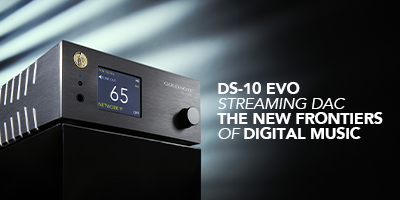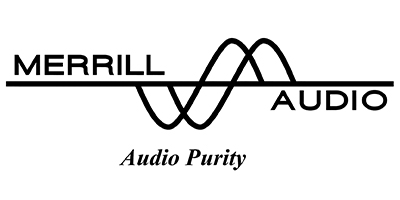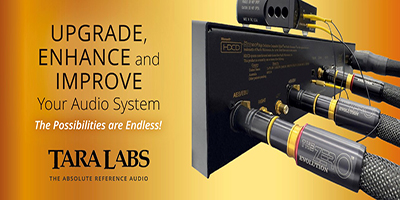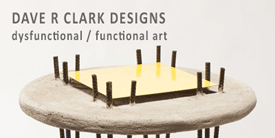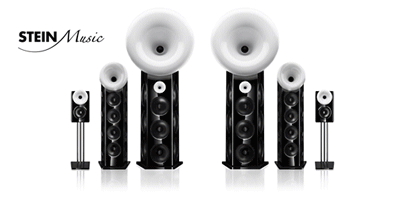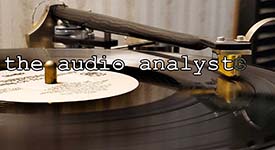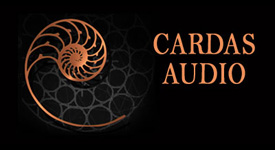Greetings friends, I hope you are well! 🙂
It's been a real pleasure to explore and tell you about the performance "Levels" of Audio Note (UK) hi-fi kit, so a big "Thank you!" to Peter Qvortrup for making this review series possible.
To orient those of you who are new to this review series, the Audio Note (UK) product lines are arranged in performance "Levels," from the affordable Level Zero to the exotic Level Six.
Each higher "Level" in the Audio Note (UK) performance level system provides a higher level of refinement. Each higher level of refinement is achieved by the circuits, power supply topology, and the quality of components and materials that are chosen to make up a component at a particular Level of performance.
The M3 RIAA phono stage is the first step of M3 to M8 preamplifier family, all of which share the same circuit topology across the range: M3 (Level Three), M5, M6 (Level Four), and M8 (Level Five), with parts quality upgraded level by level within the range to give more refined and higher levels of performance.
I wrote about the Level Three M3 RIAA phono preamplifier in Positive Feedback Issue 133, the Level Four M6 RIAA phono preamplifier in Positive Feedback Issue 135, and now I'm exploring the Level Five M8 RIAA phono preamplifier.
There's also a lot more to be read about the M3 RIAA, M6 RIAA, and now the M8 RIAA, if you search on their names in Jeff's Place search field.
I'm about halfway through playing the 134 LPs - actually about 133 1/3 LPs, I rounded up - needed to achieve the 100 hours of bedding-in time for the M8 RIAA & AN-S8 SUT pairing to reach its full level of performance.
While I continue to play LPs to top off the bedding-in time of the M8 RIAA, I thought I'd take some time to take the tops off the M6 and M8 RIAA, and do a photographic "walk-through" of the circuit upgrades, so you could see for yourself the components in the Level Four to Level Five upgrade, just like I did for the Level Three M3 RIAA and Level Four M6 RIAA phono preamplifiers shown above.
When one gets to the Level Four M6 RIAA and Level Five M8 RIAA we are definitely into the exotic Levels of performance in the phono preamplifier product lines, and are knocking on heaven's door in terms of performance.
Before we do the photographic walk-through, I want to tell you a little more about how Audio Note (UK) develops successive Levels, and share with you some intriguing insights that Peter Qvortrup recently shared with me about his development process, so that you can more fully appreciate the extensive amount of work involved in developing the successive Levels.
In a recent email exchange Peter asked me how I was getting along with the M8 RIAA phono pre & AN-S8 step-up transformer.
Here is my response to Peter:
"What I hear from the M8/S8 combo is high contrast between recordings in terms of dynamics, timbre, recording quality, resolution, etc., and so it makes it fun to hear the difference in what the musicians are doing to achieve dramatic effect, the differences in recording styles, and the choices recording engineers made across the audio spectrum during mastering for any given album.
"A lot of information & nuance comes through, yet everything sounds very naturally musical, liquid, and very emotionally stimulating.
"The M8/S8 reminds me very much of what you were relating to me when you were telling me about your concepts of accuracy, authority, and authenticity in the comparison by contrast method of development.
"I think I am really starting to understand what those design principles bring to audio performance, and each higher Level has made those principles even more apparent.
"What is perhaps most striking is how easy it is to "get" what the musicians and recording engineers were trying to convey to the listener in terms of the drama of the music, and remarkably that drama is independent of the fidelity of recordings.
"When I'm listening to an album it makes me feel like I am hearing the "authoritative" version of that album, the way the musicians & recording engineers hoped the listener would experience it."
Peter had some very interesting comments to share with me in his response:
"Thanks, what you hear is exactly what Comparison by Contrast is all about, and over the 45 or so years that it has been applied to the listening part of the evaluation, it has guided me to realise that we really cannot measure anything resembling an accurate reflection of the changes/differences in sound we experience between different parts and in many cases even circuits.
"The conclusion I have come to over the many years I have worked with this is that the reason we cannot measure these differences must be because what we measure is always in the voltage domain, never in the current domain, and I think this is where the important changes occur, because a music signal has both a voltage element and a current element and we essentially only know how to measure the former, which has over time lead us to believe that that is all that matters and the improvements in this domain will invariably lead to an improvement in sound which really is a deeply flawed assumption which not only false but has driven audio development down a path that has made music sound worse in most cases by increasingly stripping out the important current element, which “thins” out the sound and exposes the mechanical aspects, reduces “flow” and medium (or density) and makes the sound really irritating to the ear.
"One of our old customers is a famous particle/quantum physicist, who came down to visit the factory a few weeks ago. I got a chance to spend quite some time with him so during our conversation, I mentioned the fact that we cannot in any meaningful way correlate what we measure with what we hear, I told him about one of the better examples of this when years ago we designed the original M3/M8 output transformer, we then wound two identical bobbins based on the design, one with Copper wire and one with Silver wire, same gauges, same insulation materials, essentially identical except for the wire itself, we then measured both of them, inductance, resistance, capacitance etc. all of which were broadly similar with minor variations which could be sample variations.
"We then put identical C-Cores made from the same type of iron on both transformers, measured them again, resistance, capacitance, inductivity and frequency response, and again, within very small variance broadly the same.
"We then put them in a pre-amplifier (an M3 Phono like the one you have the RIAA version of) , Copper wired version on the left and the Silver wired version on the right, the M3 was equipped with a switch so we could switch between the channels, so we can switch channels and still play through both speakers.
"We played a mono record, first through the left channel which sounded really good, we then switched to the right channel and to say the difference was dramatic is an understatement, a fact you yourself can now test and experience by comparing the M3 RIAA with the M8 RIAA with each other, these two phono stages have identical circuits, output transformer designs, layouts etc., the ONLY differences are parts and materials.
"Having spent close to 50 years listening to music I have come to one central conclusion and that is that a recorded music signal has two main components, voltage (frequency) and current (dynamics/density) and I observed how, as a rule, improvements in the measured performance, beyond a certain point has negatively affected the sound and the enjoyment of most music, so my theory is that the focus on measured performance is sapping music of its essential content."
So what did I discern from Peter's illuminating response? Well the first would be that Peter's "comparison by contrast" method of development is empirical.
In case the definition of empirical doesn't immediately come to mind, here's an AI definition of empirical for you: "Empirical refers to knowledge or evidence that is based on observation or experience rather than theory. It is often used in scientific contexts to describe data that can be verified or disproved through experimentation."
So Peter doesn't use only theory and measured performance to develop successive Levels, he relies upon his experience - his ears - to be the final arbiter for what music is supposed to sound and feel like, and goes through a laborious comparison by contrast process of trying many different combinations of components in circuits to determine an optimum set of components at the price point for any given Level.
After many years of this extensive empirical investigation into the influence on performance of component parts in circuits, Peter has come up with seven Levels, Level Zero through Level Six, of performance (at this LINK you can read about the description of Levels for amplifiers).
For our photographic walk-through of the M6 RIAA and the M8 RIAA, we are interested in Level Four and Level Five, respectively:
"Level Four: Class A single-ended directly heated no feedback triode amplifiers, with high quality parts and materials such as hard wired circuits using silver wire, copper or silver foil signal capacitors, choke coupled power supplies with valve rectifiers for the HT, with a mixture (relative to overall cost) of Cerafine or Black Gate electrolytic capacitors, non-magnetic resistors made from tantalum film and output transformers with C-cores (instead of IE cores traditionally used due to cost) with very high nickel content."
"Level Five: Class A single-ended directly heated no feedback triode amplifiers, with only the very best parts and materials available, fully silver wired high content nickel iron C-core output transformers, Black Gate capacitors throughout where available, silver foil signal capacitors, and both circuit and power supply hard wired with silver wire."
Both the Level Four M6 RIAA and the Level Five M8 RIAA share the same circuit, with pure Class A operation, zero negative feedback, single-ended circuit topology, and valve rectification, with the difference between the two being in their materials and component quality in the circuit.
Please click on the link below to go to the next page of the article.

